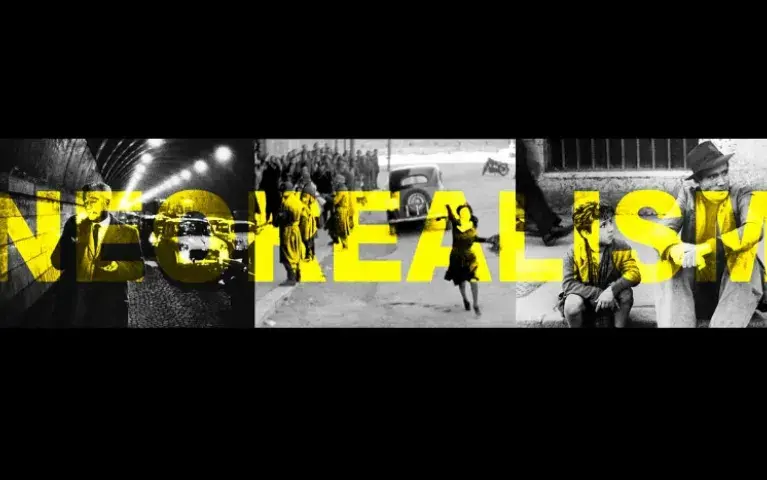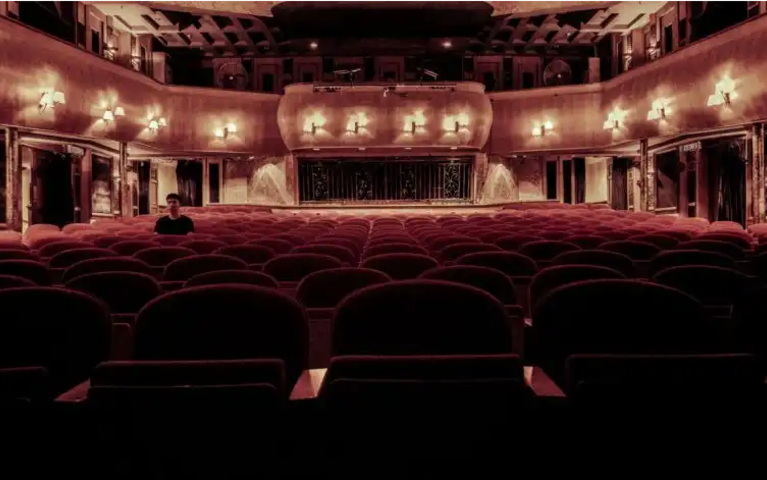A Tale of Two Films: A Guide to Italian Neorealism

In 1952, a well-known Italian film director, Vittorio De Sica, collaborated with Hollywood on a movie using American actors to produce a standard love story of an American woman in Rome. This collaboration was marred with severe creative differences between De Sica and his American producer, David O. Selznick. The nightmare development and post-production of the film resulted in two different versions of the same work: an American release named “Indiscretion of an American Wife” and an Italian one named “Stazione Termini”, both released in 1953.
De Sica was famous for his creative and unconventional routes whereas the producer Selznick was well-known for imposing his will and sensibility onto his films, and when these two worlds of cinema collided and clashed, audiences and cinema students alike finally understood the meaning and essence of Italian neorealism.

De Sica’s version is by no means the first neorealistic film, but it’s one of the most famous examples because we have a Hollywood version that we can use for direct comparison. Italian neorealism is considered by many as one of the most important movements in cinema history that left a massive legacy on filmmaking itself. But what is Italian neorealism and how does the Italian version manifest neorealism in practice?
Both films start with a shot of a city, the American version explicitly highlights that the city is indeed Rome and goes the extra mile in connecting Rome to the theme of love and romance. Italian audiences, and almost anyone who visited Rome, don’t necessarily need that explicit information as the title, the sets and the aesthetic of the film are essentially Rome. The American production goes further in revealing shots of a letter that points to the central tension of the film. Meanwhile, the Italian version takes twice as long and yet reveals far less.

Selznick’s American version consistently prefers a shorter take than De Sica’s Italian version. For Selznick, and the majority of Hollywood, the act of walking needs only to be implied whereas in the Italian version, the walk must be endured. The Italian version reveals a strategy unheard of in American cinema at the time, the camera follows the actors’ entire walk through the sets, whereas the American version jump cuts through these moments. Yet it is between these moments that the Italian style seems to be revelling in what the American discards.
De Sica’s cameras linger on the space that the lead character has just left and stays on others who are still there, as they enter and leave the frame. Main characters leave a space, but the cameras don’t follow, nor does the director cut; the film lingers on extras that we’ll never know. For De Sica, and many other Italian filmmakers, these extras are inhabitants of the world and not “extras”, they are vital and therefore worthy of your time. By lingering on these extras, the primary characters are decentralised from the frame but not the plot itself. The American version did not share the same enthusiasm as the Italian, and thus, each and every one of these scenes found themselves on the cutting floor. Hollywood views these shots as excessive, or even worse, a distraction, derailing the plot or drawing attention away from the stars, in other words, the American version of the film viewed these scenes as an unnecessary diversion.
Video Player
00:00
01:42
Neorealism was a cinematic movement that started in Italy in the 1940s and stretched into the 1950s. The roots of the movement started after the fall of the Fascist government of Italy. Prior to neorealism, Mussolini’s government built the world-famous Cinecittà Studios outside of Rome in an effort to revitalise Italian cinema. Mussolini himself inaugurated the studios in 1937, soon after, post-production units and sets were constructed and heavily used for massive epics such as The Fall of Hannibal (1937) and The Iron Crown (1941), the former showcased the technological advancement of the studios when over 7,000 actors were involved in the filming process.”
Alas, the Cinecittà Studios were heavily damaged during the war and the fascist regime fell with it. With this sudden vacuum and power shift, Italian film industry, and Italian society alike, lost its centre. Italian filmmakers thus utilised the methods, plots, ideas, and schools of thought that later were coined in Neorealism as a sign of the cultural change and social progress seen in post-World War II Italy. Films were now no longer a commodity but a necessity in coping with the reality of the harsh conditions. In addition, stories that were no longer allowed under the fascist government were now open for discussion, and thus, welcomed by filmmakers and audiences alike. In addition to this, by not having a centralised studio for their filmmaking efforts, Italian directors took their stories to the streets of Rome and shot almost everything on location.

The newly found artistic freedom allowed the expression of the general disillusionment about the world amongst Italians, which is clearly visible in many neorealistic films. Moreover, shooting on location, as opposed to Cinecittà, was perhaps one of the most cost-cutting methods that could’ve been used by any filmmaker at the time. In addition, the usage of first-time and often untrained actors adds to the realism (and the cost reduction) of filming on the war-torn streets of Rome. Neorealist films portrayed a genuine cynical outlook on life by having working class or other marginalised members of society as its main actors, in other words, people affected by the Italian political and economic collapse of the years that followed the war.
Another major important aspect of neorealism was the plot, and how often it ended in an intentionally unsatisfying or ambiguous way. In a famous example, “Rome, Open City” (1945) one of the main characters was killed halfway through the film, the character is murdered by an anonymous soldier, and the film simply moves on without them.
Federico Fellini is another important example of neorealism, especially his first films that came out in the early 1950s. His 1956 film, “La Strada”, contains aspects of neorealism, most importantly, its main plotline of bleakness and the pains of living in a collapsed society, the film literally starts with a mother selling her least favourite daughter off to a travelling circus for the equivalent of 16 USD to feed the rest of her children.

A lesser-known filmmaker involved with Neorealism was Giuseppe De Santis. His films are known for the influence of Marxism on their working-class characters; his 1947 début “Tragic Hunt”, features a group of peasants forming a collective. His most well-known work came two years later with “Bitter Rice”, which got DeSantis an Oscar nomination for Best Original Screenplay. This film portrays the working class and also criminals as its main protagonists, fitting in with neorealism as a vehicle showcasing societal outsiders.
Another less remembered neorealist director was Alberto Lattuada and his 1946 film, “The Bandit”, a film that revolved around criticising post-war Italian society and dealt with taboo topics like prostitution which would have never been made during the fascist era. A few years later, Lattuada made “The Mill on the Po” (1949), which centres around peasant farmers, it contained explicit anti-capitalist sentiment. He was also the co-director on Fellini’s first film “The Lights of Variety” (1950), another example of societal outcasts being the main emphasis of a dramatic feature film from that era.
Neorealism was a relatively short-lived movement, but its influence was anything but, it even inspired mainstream filmmakers like Martin Scorsese as seen in his documentary “My Voyage to Italy” (1999). It can also be seen in Oscar-nominated films such as “Nebraska” (2013) and “Frozen River” (2008). In “Nine” (2009), Kate Hudson did an entire musical number in celebration of neorealism.
Whereas western productions in general and American productions in particular have evolved towards heavily monetised endeavours of cinema, creating revenue and streams of budgeting that create dedicated sets, and revitalises the locations on which it’s filmed, the neorealistic approach landed on segments of cities and departed them, in an almost ghostly fashion, leaving virtually no trace. This was especially true in developing areas like Latin America and Africa. A direct inspiration can be seen in many of the movements of the 1950s and 1960s, most notably with the French New Wave, with on-location filming, non-professional actors, and a plethora of social and political commentary.
The Film Library of the Royal Film Commission – Jordan hosts a number of the most classical films from the era of Italian neorealism, and they were kind enough to share the list below.
- Bellissima (1950) by Luchino Visconti
- Miracle in Milan (1951) by Vittorio De Sica
- La Terra Trema (1948) by Luchino Visconti
- La Strada (1956) by Federico Fellini
- Story of a Love Affair (1950) by Luchino Visconti
- Il Bedone (1955) by Federico Fellini
- Bicycle Thieves (1948) by Vittorio De Sica
- Mama Roma (1962) by Pier Paolo Pasolini
The images and visual content in this article, as well as some of the information above, including frame counts and deleted scenes, are courtesy of the British Film Institute‘s audio-visual publication, Sight and Sound.
*Rick W. Hindi is the Online Editor at the Royal Film Commission; he is also the Communications Coordinator of the Amman International Film Festival (AIFF); he has a passion for films, international relations, linguistics and anthropology.















